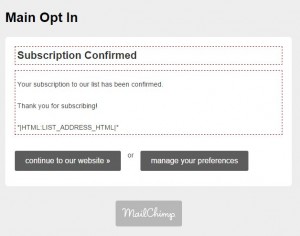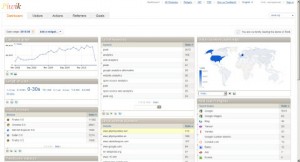The concept of a cashed up demand plan is not new. In fact, it has always been fairly common for the sales plan within Sales and Operations Planning (S&OP) to be represented in terms of revenue. Now, with ever more organisations undertaking Integrated Business Planning (IBP) or other versions of advanced S&OP, the importance placed on the cashed up demand plan is increasing. And yet, for some reason, the cashed up demand plan is rarely done well.
To truly integrate the financial planning into the S&OP process a new approach is needed. Financial planning needs to be intrinsically embedded into the S&OP process with a fully integrated process. Read on for my perspective on this integrated approach and some common mistakes that are made along the journey towards financially integrated S&OP.
What’s it All About: Why do we need a Cashed Up Demand Plan?
The cashed up demand plan is more important than ever before. Many organisations are now embarking on the journey towards advanced S&OP and IBP, and as a result are aiming to fully incorporate their financial business planning processes with their S&OP process. In fact, in my recent post on integrating S&OP, I completely left out business planning from the hierarchy of plans, assuming it was fully integrated with S&OP. Full financial integration not only ensures that the entire organisation is aligned behind a single set of functional plans, but also enables S&OP decisions to be made with a view to the full financial impact.
This is indeed a worth-while aim, and when executed well goes a long way towards enabling an effective one number planning process. In addition to meeting the objectives of the traditional S&OP process, the cashed up demand plan also needs to meet the requirements of the business planning process. Lets take a look at the objectives of each:
- Sales & Operations Planning: The overall goal of the S&OP process is to agree on an aligned set of feasible functional plans and targets for the next 18 – 24 periods, consistent with goals and strategy, to be deployed throughout the organisation.
- Business Planning: The goal of the business planning process is to produce a statement of future revenue, profit and cost objectives. One of the outputs of the business planning process is usually the budget or operating plan. The business planning process is often (and should be!) used to produce a more regular quarterly (or better yet monthly) estimate of financial performance.
As you can see, for a single process to meet the objectives of both of the above traditional processes, complete financial integration within the S&OP process is required. A key step is the creation 0f the cashed up demand plan.
The Elements of a Cashed Up Demand Plan
As I have already mentioned, the Sales Plans from the S&OP process is often already expressed in terms of revenue, even within traditional implementations of S&OP. Often however this is achieved simply via a volume to revenue ratio at particular agreed level. While this is satisfactory for basic conversion between revenue and volume, it does not meet the needs of fully integrating the business planning process.
So what exactly is makes up a good cashed up demand plan in the context of advanced S&OP or IBP? The exact answer will vary from organisation to organisation, however there are some common elements. Lets take a look.
- Volume: The basic building block of the demand plan, and crucial for integration with manufacturing and distribution planning processes. Depending on the industry, this can be expressed in units, volume, weight (to name only a few) or a combination of these.
- Revenue: At a bare minimum, a cashed up demand plan requires that volume is converted into a projection of revenue. In a more advanced context, this projection will be broken into multiple measures to offer greater insight. In addition to gross revenue, often ‘cost of sales’ elements such as trading terms, discounts, promotional/trade spend and mark downs are subtracted resulting in a measure of net revenue. Sometimes the ‘cost of sales’ elements and broken into categories to allow a more granular categorisation, but this is not always required for planning purposes.
- Profit: A measurement of profit is not always considered necessary for a cashed up demand plan (with projection of profitability left to a later stage of the S&OP process). That being said, without some measure of profit being included at the demand plan stage, it is difficult for the sales and marketing function to prioritise spend and activity to maximise profitable revenue. This is especially important where there is a high level of margin variability within the portfolio. However, to make sure that focus is not subverted to planning supply chain costs and cost of goods (which certainly should not be the focus of a demand review), this should be done using some form of agreed standard cost of goods, leaving the detailed planning of supply chain costs and consequently variances to the standard cost of goods up to later stages of the S&OP process.
From the above, we are able to see that a sophisticated cashed up demand plan is far from simple. This is even more true when considering that the process of building the plan needs to be agile enough to be easily repeatable each month (and this is without considering scenario and contingency planning on top!). How can a cashed up demand plan be effectively provided each month? Firstly lets take a look at what not to do, with a look at some common mistakes.
2 Common Mistakes when producing the Cashed Up Demand Plan
Although in practice not simple, conceptually the cashed up demand plan is not difficult. There are however some common mistakes that drastically impact effectiveness. Lets take a look at two of them below:
Mistake #1: Drowning in Detail
For the cashed up demand plan to be effective, it needs to be agile and easily repeatable each month. All too often, the focus becomes the process of actually building the cashed up demand plan (due to the effort required) and not using the plan to make effective decisions. Remember, the goal of S&OP and business planning is not to lock in detailed execution level plans, but rather to align plans with strategy and targets and to make effective decisions around the prioritisation of resources. In all but the most simple of business models, trying to plan time phased changes to price, discounts and margin mix at a detailed level quickly becomes unwieldy and even unmanageable.
S&OP is traditionally an aggregate planning process and the addition of integrated financials does nothing to change this. Plans should be built at an aggregate level, based off a combination of historic price, discount and mix, adjusted for known changes and activity. Where necessary, detailed analysis can be completed (to understand a future margin change based on a volume mix change as an example) and incorporated into the plan, but by planning at an aggregate level this only needs to occur as appropriate and not as a matter of course.
Mistake #2: The Great Hand-off: Throwing over the Fence
Traditionally, the role of demand planning is limited to planning of volume, with the financial planning of the business planning process occurring completely separately. Worse yet, it is not at all uncommon for demand planning to work with sales and marketing teams to build the demand plan and then hand it over to the finance function to be ‘cashed up’. In effect the volumes get handed off or ‘thrown over the fence’ and the responsibility for producing the cashed up demand plan sits with a completely different function of the business. Not only does this limit the effectiveness of decisions made during the demand plan build (its hard to make financially informed decisions when the financial forecast hasn’t been completed yet!), it also creates issues aligning assumptions. For advanced S&OP or IBP to be effective, it is important that the plan is based on one set of assumptions. No matter how well-intentioned, maintaining an aligned set of assumptions across volume and financial planning when a hand-off is involved is nearly impossible.
To truly integrate the business planning processes within S&OP, a mindset change is needed. Rather than building a detailed demand forecast and then ‘cashing up’, the focus needs to switch to building a cashed up demand plan. The difference is subtle but critically important. Let’s take a look at an integrated approach to make this happen.
Cashed Up Demand Plan: the Integrated Approach
To truly unlock the synergies between S&OP and the business planning process and to integrate these two processes once and for all, a new approach is needed. This fully integrated approach integrates methodologies from S&OP and the business planning process to successfully (and efficiently!) meet the outcomes of both. Lets take a look at some elements below:
- The Role. Changing the conventional paradigm, a fully integrated process requires a fully integrated role. Here, a single role is now accountable for the demand plan within the S&OP process in the context of both volume and financial projection. This ‘Commercial Planner’ or ‘Commercial Demand Planner’ needs both the skill-set of a traditional demand planner as well as high levels of commercial acumen and financial literacy. The role is not about forecasting, but rather partners closely with the sales function to support creating a cashed up demand plan, assisting to quantify the impact of planned activity in terms of both volume and financial measures.
- The Process. Again bucking convention, the building of the demand plan in both volume and financial measures needs to occur at the same time, as part of the same process. To enable this, the business is broken up across product and customer channel into a series of mutually exclusive (but collectively exhaustive) segments, each with a clearly identified owner from the sales or category team. Demand Planners then partner with this owner to build up the cashed up demand plan. These segments can then be rolled up to the total level (often via intermediate levels in larger organisations) where the plan owner is able to present their plan in terms of both volume and financial measures. Via this process ultimately the plan rolls up to total business represented by a single plan owner (usually the sales director) representing the entire cashed up demand plan on behalf of their team in the Demand Review.
- The Planning Level. Similar to traditional S&OP, the goal of advanced S&OP and IBP is not to produce detailed execution plans, but rather to facilitate functional alignment behind one set of feasible plans and to enable improved long-term decision-making to guard against risks and to maximise opportunities. For this, low levels of granularity and detail are needed only in-as-much as they are required to inform the aggregate planning process. The planning level should be set as high as possible to enable agile planning (although the level does need to be at least as low as the ownership segments mentioned above!). Remember, detailed analysis can always be used as required. The primary purpose of this plan is as a high level projection and as a decision-making tool. Too much detail can rapidly derail the process, slowing it down to the point where it is too slow to support agile decision-making.
- The Measures. The measures that should be used depend on the individual business. At a minimum, volume and revenue are required. Some form of measure for profit is usually also advisable to ensure that demand generation activity is focused in such a way that it produces profitable outcomes for the business. The measures used should be sufficient to enable the plan owners to make informed decisions and to drive desired financial outcomes. Further to this, the measures used should also meet the requirements of downstream planning processes for integration into mandatory financial reporting and budgeting requirements. Whatever the measures used, it is critical that these are used the whole way through the build of the demand plan with the identified plan owners.
The outcome of the above is a fully integrated process of creating a cashed up demand plan. Integration starts at the lowest identified level of plan ownership and ladders through the organisation ensuring all plans are based on aligned assumptions and providing consistency in the use of financial projections to aid decision-making. A fully integrated cashed up demand plan is a critical step in the journey towards a financially integrated S&OP process!
Have you seen or experienced an effective methodology for producing a cashed up demand plan? Perhaps you are as we speak somewhere on the journey towards financially integrated S&OP. What are some challenges you have faced? As always, please share your insight and perspectives in the comments below.
The post Cashed Up Demand Plan: Towards Financially Integrated S&OP appeared first on The Planning Blog.
photo credit: frankieleon (license)
(228)





